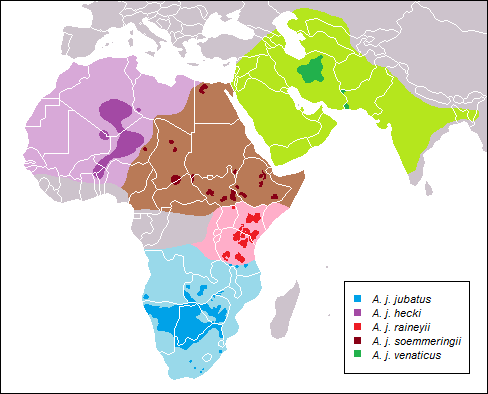Facts About Northwest African cheetah
The Northwest African cheetah, also known as the Saharan cheetah, is a critically endangered subspecies indigenous to the Sahara and Sahel regions. As of 2008, fewer than 250 mature individuals remained. This subspecies was first described by the German zoologist Max Hilzheimer in 1913 and is scientifically designated as *Acinonyx hecki*.
A distinctive feature of the Northwest African cheetah is its unique appearance. It has a nearly white coat with faint black spots, and sometimes no spots on its face at all. It is also smaller than other African cheetahs. These cheetahs are found in fragmented populations across the western and central Sahara and Sahel. Overall, there are approximately 457 individuals distributed across various countries in West, Central, and North Africa.
These cheetahs have adapted to the harsh desert environment of the Sahara. They are primarily nocturnal and hunt antelopes such as the addax and Dorcas gazelle, which are also suited to arid conditions. Remarkably, they can survive without direct access to water by deriving moisture from the blood of their prey.
The Northwest African cheetah faces significant threats, including habitat loss, human conflict, and poaching. Conservation efforts are crucial to prevent this critically endangered subspecies from becoming extinct.

 Niger
Niger